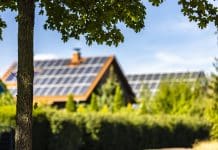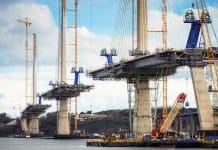The latest wall cladding combination tested as part of the government’s series of large-scale fire safety tests following the Grenfell Tower disaster has passed and meets current Building Regulations guidance.
The tests are designed to see how quickly a fire spreads up a wall by starting a fire at the bottom of a nine-metre high model wall to see how quickly the fire spreads upwards.
This fifth test was of a wall cladding system consisting of Aluminium Composite material (ACM) cladding with a limited combustibility filler (category 1 in screening tests) with PIR foam insulation.
The previous tests have involved panels made from three different kinds of ACM (consisting of category one, category two and category three) with two different kinds of insulation behind them, in six different combinations.
The government’s Expert Panel advises that the results show that this combination of materials can be compliant when installed and maintained properly. The government has not been informed of any tall buildings over 18 metres in England using this particular combination of materials in their wall system, but it could offer a possible solution for some buildings with other cladding systems which have been identified as a fire hazard through previous large-scale tests.
The purpose of the testing programme is to develop a better understanding of how different types of cladding panels behave with different types of insulation in a fire. This is so building owners and their professional advisors can make informed decisions.
The clear advice from the Expert Panel remains that building owners need to continue to take professional advice regarding remedial work that takes into account the specific circumstances of their building.
The government announced the independent review of building regulations and fire safety on 28 July 2017. This forward-looking review will examine the regulatory system around the design, construction and on-going management of buildings in relation to fire safety as well as related compliance and enforcement issues.










![[VIDEO] Making DorTrak reports easy to read with Fireco Inspecting fire doors at Fireco, firedoor technology, 2023](https://www.pbctoday.co.uk/news/wp-content/uploads/2024/04/JPZ_2364-web-218x150.jpg)


